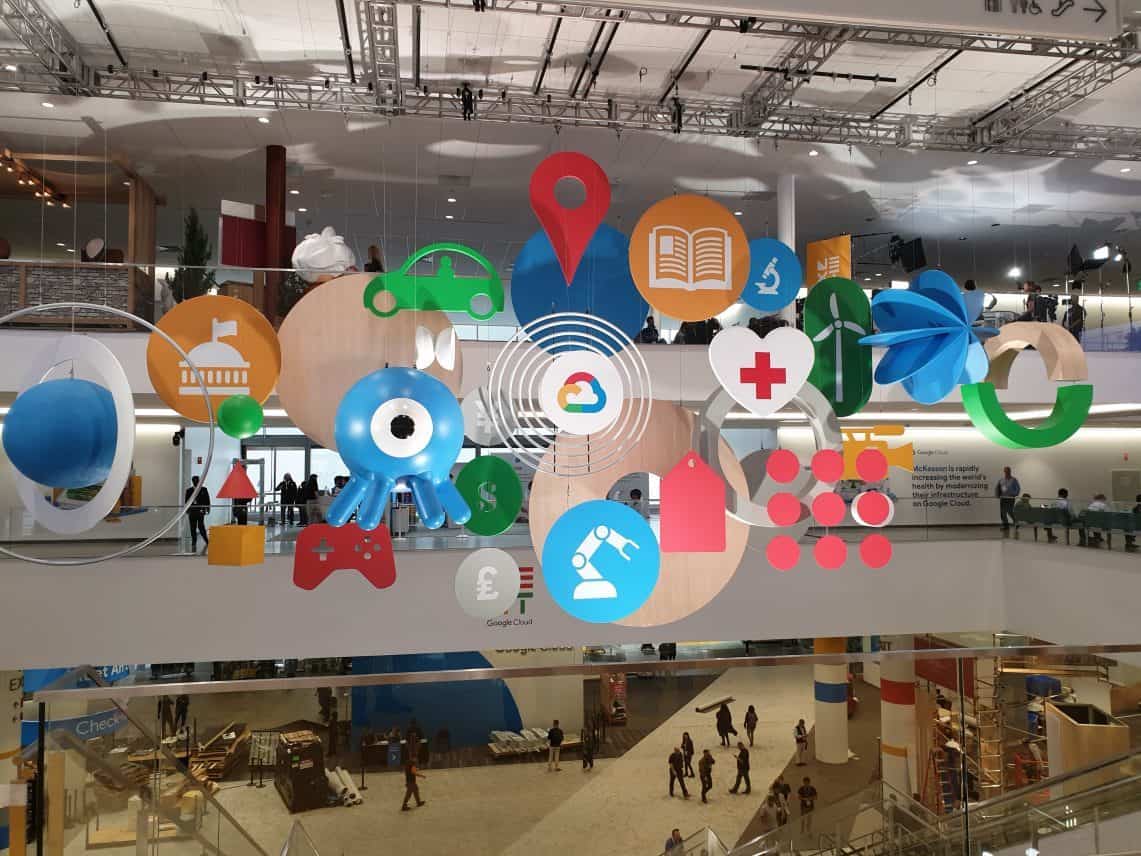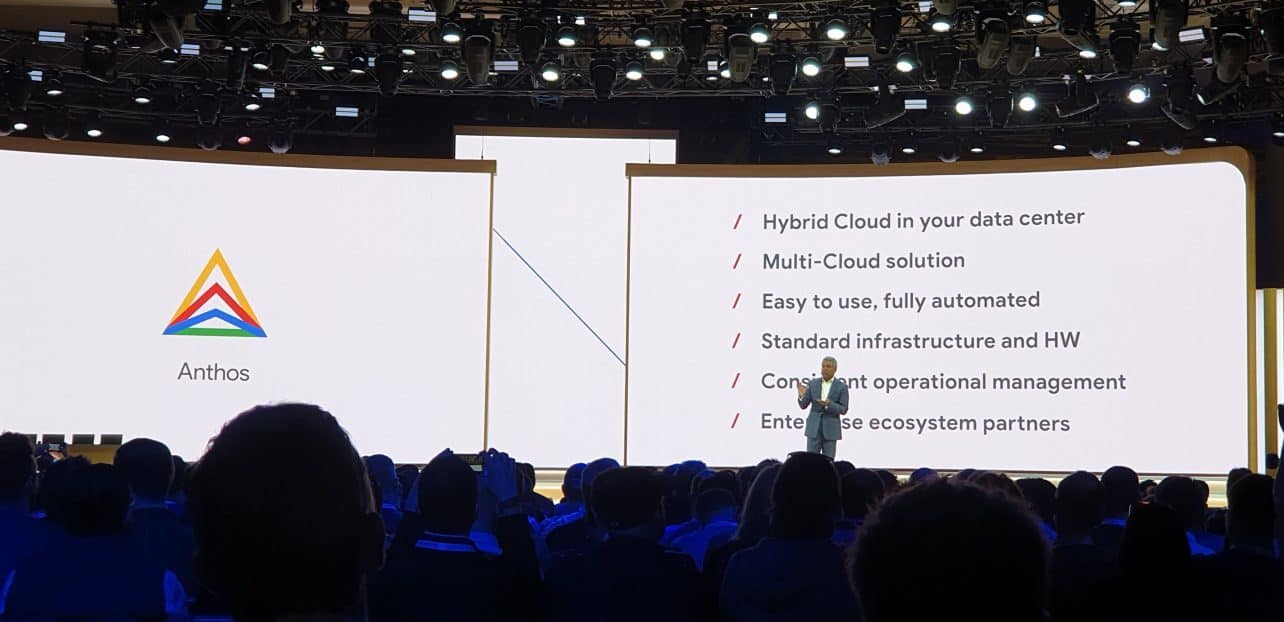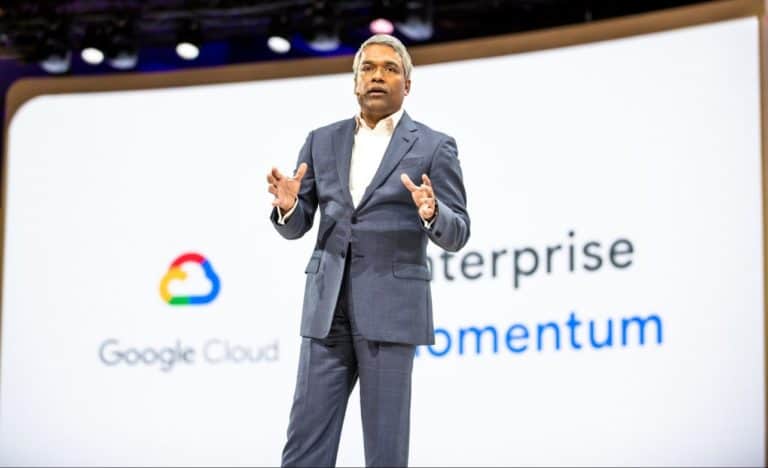As Cloud Service Providers start their journey up the food chain and start pulling together tools and applications that are widely used, especially by business customers, they start to build operational platforms on which those business users can build the services they require. The objective is quite simply to make their services attractive to users, by taking responsibility for more and more of the fundamentals of setting up a cloud service and migrating their business on to it. In short, make using service X a ‘no brainer’ of a decision. At the recent Google Cloud Next conference, several of those services were announced.
It could be argued that Google Cloud has been lagging behind in this particular race, concentrating far more on providing Infrastructure as a Service. But as the conference in London demonstrated, it is catching up quickly, with quite a selection of business-related services on show and ready to go to market.
This is not to say that infrastructure was forgotten at the conference. In fact, one of the earliest announcements during the keynote was of new tools: an External Key Manager together with Key Access Justifications, that give users total control over access to their sites on Google Cloud, to the point where they can take their encryption key and store it away from the Google service completely, if that is what is required.
Together, these tools give users visibility into every request for an encryption key that permits data to change state from at-rest to in-use, with a justification for that request, plus a mechanism to explicitly approve or deny decryption using the key. This is then all managed via policies set by users working with via third-party functionality. There was a small degree of confusion when Google Cloud CEO Thomas Kurian announced these tools, for at first it appeared that the default status was that Google had access to the websites. Kurian, however, later confirmed that this was and never had been the case.

AI tools
On the business side of the fence some new AI-based tools for the popular Google Docs were announced, all with the intention of making business users more productive – and quite possibly more accurate – in their written work.
For example, Smart Compose, already in Gmail, is being added. It uses Google AI to suggest complete sentences in emails and documents, and is claimed to have saved the typing of more than 2 billion characters each week. New tools to cut grammatical and spelling errors have also been added. Based on neural network technology it is aimed at helping individuals catch such errors. The grammar checking tools work in a similar way to language translation tools, changing the language of ‘incorrect grammar’ to the language of ‘correct grammar.’
Another Gmail tool, spelling autocorrect, has also made its way across to Google Docs. This uses Google Search to learn new words relevant to a business and suggest them as alternatives. This includes learning those words, such as acronyms or project names, that are very specific to a business and allow them to be used unchallenged.

Working with mobile devices to improve staff productivity and collaborative capabilities has also become a key goal for Google, through the introduction of Google Assistant. This provides a number of useful services such as managing an individual’s Calendar, such as reading it out, creating, cancelling or rescheduling events, providing hands-free dialling and interpersonal messaging services.
Most of these introductions are now available from Google Cloud on beta testing terms.
Opening AI’s black box
Artificial Intelligence systems are, of course, all the rage these days, especially if they are the smaller, more targeted applications that might more properly be called Augmented Human Intelligence. These generally seem to work quite well, but there still has to be considerable doubt about applying the technology on a grander scale, not least because no one knows what they are doing exactly in the process of arriving at a result.
Therefore, Google has had an important first pass at a solution – building an AI solution that can explain at least some of its thinking.
Known as Cloud AI Explanations, it works by quantifying the contribution each data factor has made to its final decision. Data scientists can therefore determine what drove the decision it arrived at and where necessary modify the code and change the result. The company acknowledges that it is only a first step, but sees it as, arguably, a significant first step along an important road for business users out into the future.
Analytics
Not surprisingly, analytics got a look in, primarily with the addition of Looker to the company’s existing data warehouse capabilities with BigQuery. That already operates with SQL for real-time data stream queries, as well as both fully managed Hadoop and Spark clusters.
Looker, which Google acquired earlier this year, provides two new capabilities. One is the ability to define business metrics once, in a consistent way, across data sources. Users can then query data while maintaining consistent definitions, so teams get accurate results. The other is the provision of an analytics platform that can deliver applications for specific use-cases, such as Sales Analytics.
Workload migration
A key capability for Google, especially when targeting enterprise users, is providing tools that help them migrate and run their critical legacy applications. One of the widely used providers of such software is, of course, SAP, and that is now a primary target for Google Cloud. It is another acquisition that is helping to make this possible, with CloudSimple having been the target in question.
This adds the ability to make migration as easy as possible, particularly for big workloads like those based on SAP. CloudSimple allows users to maintain 100% compatibility with existing tools, skills, and processes used on-premise when applications are migrated to the cloud. This allows teams to manage workloads on the public cloud without disrupting any network, security, data protection or audit policies. It is capable of migrating SAP certified VMs with 12 terabytes of memory, and can migrate them while they are live and running.
New templates have also been introduced to use when scaling moving SAP apps. This is important because it overcomes a significant problem when running big apps like SAP. They need bare metal resources, which Google can provide, but the apps no longer need to be stopped if changes are to be made. Using CloudSimple allows the same capabilities to be available for Microsoft SQL server applications as well.

Anthos
One other development that could interest business users out into the future is Anthos, which was first announced earlier this year but is now available in beta. The goal here is to decouple applications from the infrastructure so that existing applications can both be migrated and modernised, mixed with new applications in the same service, and run as services where they are needed, anywhere across the company network.
At one level Google sees it as a `lift and shift’ tool for application migration, and it can convert workloads ranging from physical servers on-premise through to VMs running on other cloud services into containers in the Google Kubernetes Engine. But at a higher level the company sees it as a key tool in building future edge compute resources where it provides the structure for virtualised, distributed datacentre architectures, moving the compute resources to where the data is generated rather than moving data to a central datacentre.
So, in the same way that applications are increasingly becoming serverless, whole operational systems will in effect become `datacentre-less’.
